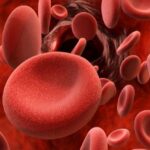International Nurses Day: empowering nurses in vascular access
Happy International Nurses Day to all nurses out there!
Nursing can sometimes be undervalued by healthcare leaders, policy makers and society at large.1 The International Council of Nurses chose the economic power of care as the theme for this year’s International Nurses Day.1
The aim is to create a paradigm shift by “demonstrating how strategic investment in nursing can bring considerable economic and societal benefits.”1 On a day that honours nurses around the world, we ask the question: Can nurse-led intravenous (IV) teams empower nurses?
Nurse empowerment relies, in part, on mobilisation of resources.2 For Mudallal et al., “…power is the ability to attain, organise, and control resources, information and support to achieve organisational goals”3 in a work environment. Leader empowering behaviours can have an impact on worker performance and workplace empowerment.3
Five potential benefits of leader empowering behaviours:3
- Enhanced work meaningfulness
- Increased participation in the decision-making process
- Recognition for high-performance
- Improved attainment of organisational goals
- Autonomy and freedom from bureaucratic barriers
When nurses take ownership of vascular access management (VAM) with their holistic view of the patient, time from vascular access device (VAD) referral to placement is reduced with nurse-led central venous catheter (CVC) teams,4 while patient satisfaction increases during nurse-led peripherally inserted central catheter (PICC) insertion when compared with radiologists.5
Nurse-led VATs may help increase the economic power of healthcare facilities by reducing IV complications.6 They may also have a positive impact on patient safety and satisfaction, while increasing organisational efficiencies.7
In healthcare facilities where VATs haven’t been implemented yet, the following stories may inspire those with the goal of creating a specialised IV team of their own.
More on this topic: Invisible to invaluable: Honouring International Nurses Day
International Nurses Day: Empowering nurses with a midline team in Poland
Multiple insertion attempts in small veins can lead to significant distress in patients and can be time-consuming for healthcare professionals (HCPs) who place VADs.5
It may be difficult to place an implantable port in patients with certain kinds of neck cancer because of tumour location.8 Midline catheters and PICCs may be suitable alternatives to centrally inserted central catheters (CICCs) in certain clinical situations.8
Let’s head to Poland to meet Maciej Latos, a nurse practitioner in the intensive care unit (ICU) at the Medical University of Warsaw (MUW) Hospital. During the COVID-19 pandemic, Mr Latos was caring for patients with respiratory failure who didn’t always require a CVC, but still needed reliable vascular access.9
ICU colleagues suggested he place midline catheters as an alternative to CVCs.9 Midline catheters are indicated for IV therapy lasting up to 4 weeks.8 Mr Latos and his colleagues developed a protocol and nursing staff were trained on midline echo-guided insertion.9
At first, midlines were only placed in patients with difficult venous access (DIVA).9 But they soon expanded midline insertion to patients without DIVA as well.9
A team of nurses at the MUW Hospital was then trained to place peripheral intravenous catheters (PIVCs) using ultrasound guidance.9 Their IV team is made up of 10 nurses and 3 physicians.9 It has inspired other hospitals in Poland to develop their own teams.9
International Nurses Day: Empowering nurses with a PICC team in Czechia
Now, let’s discover how the first PICC team in Czechia was implemented. Six nurses at the Faculty Hospital Prague Motol in Prague attended a 3-month training programme to learn PICC and midline catheter placement using ultrasound, electrocardiogramme (ECG) and fluoroscopic navigation.8
Ultrasound guidance was used by two of the six members of the team to place these catheters.8 Lisova et al. conducted a study on this PICC team.8 During the study period, they placed a total of 167 PICCs and 162 midline catheters.8
PICC complication rates tend to be higher in healthcare facilities without a dedicated PICC team.5 Complication rates for PICCs placed in this hospital were comparable to rates reported in the literature, as well as complication rates for PICCs placed by Czech physicians.8
Andrew Barton, Chair of the National Infusion and Vascular Access Society (NIVAS) recommends a PICC team made up of two specially trained nurses and a clinical assistant as a starting place for a specialised IV team.7
Beyond midline and PICC teams on International Nurses Day
Once a midline or PICC team is established, nurses may be empowered to expand the service to a full VAT. This expanded team would include an assessment process, tool and an algorithm, as well as HCPs from different medical fields.7,10
Nurses on VATs reported:10,11
- A sense of autonomy11
- Confidence in speaking up11
- A collaborative role in the VAD selection process11
- Improved satisfaction10
- Support from management11
VATs can contribute to nurses’ sense of empowerment,10,11 while increasing the economic power of care.6,11 If you don’t already have a specialised IV team in your healthcare facility, why not start one today, on International Nurses Day?
More on this topic: How to turn a PICC team into a vascular access team
References
- International Nurses Day 2024 theme announced! Our Nurses. Our Future. The economic power of care. International Council of Nurses (ICN). Published January 16, 2024. Accessed March 14, 2024. https://www.icn.ch/news/international-nurses-day-2024-theme-announced-our-nurses-our-future-economic-power-care
- Teixeira AC, Nogueira A, Barbieri-Figueiredo M do C. Professional empowerment and evidence-based nursing: A mixed-method systematic review. J Clin Nurs. 2023;32(13-14):3046-3057. doi:10.1111/jocn.16507
- Mudallal RH, Othman WM, Al Hassan NF. Nurses’ Burnout: The Influence of Leader Empowering Behaviors, Work Conditions, and Demographic Traits. Inq J Med Care Organ Provis Financ. 2017;54:46958017724944. doi:10.1177/0046958017724944
- Alexandrou E, Murgo M, Calabria E, et al. Nurse-led central venous catheter insertion-procedural characteristics and outcomes of three intensive care based catheter placement services. Int J Nurs Stud. 2011;49(2):162-168. doi:10.1016/j.ijnurstu.2011.08.011
- Walker G, Todd A. Nurse-led PICC insertion: is it cost effective? Br J Nurs. 2013;22(19):S9-15. doi:10.12968/bjon.2013.22.Sup19.S9
- Morrow S, DeBoer E, Potter C, Gala S, Alsbrooks K. Vascular access teams: a global outlook on challenges, benefits, opportunities, and future perspectives. J Assoc Vasc Access. 2022;27(1):1-11. doi:10.2309/JAVA-D-21-00020
- Barton A. The Benefits of a Nursing Led Vascular Access Service Team: A White Paper to outline a standardised structure and approach for the NHS to deliver vascular access services in every hospital. Published online January 6, 2022. Accessed August 16, 2023. https://nivas.org.uk/contentimages/main/NIVAS-White-paper-for-standardisation-of-vascular-access-teams-within-the-NHS_FINAL-27.06.22.pdf
- Lisova K, Paulinova V, Zemanova K, Hromadkova J. Experiences of the first PICC team in the Czech Republic. Br J Nurs. 2015;24(2):S4, S6, S10. doi:10.12968/bjon.2015.24.Sup2.S4
- Latos M. Establishing a Vascular Access Team Overseas. INSider. 2023;6(4):5-8.
- Cortés Rey N, Pinelli F, van Loon FHJ, et al. The state of vascular access teams: Results of a European survey. Int J Clin Pract. 2021;75(12):e14849. doi:10.1111/ijcp.14849
- Quinn M, Horowitz JK, Krein SL, Gaston A, Ullman A, Chopra V. The role of hospital-based vascular access teams and implications for patient safety: A multi-methods study. J Hosp Med. 2024;19(1):13-23. doi:10.1002/jhm.13253
This list of references to third-party peer-reviewed material and the sites they are hosted on are provided for your reference and convenience only, and do not imply any review or endorsement of the material or any association with their operators. The Third-Party References (and the Web sites to which they link) may contain information that is inaccurate, incomplete, or outdated. Your access and use of the Third Party Sites (and any Web sites to which they link) is solely at your own risk.
BD-120173




